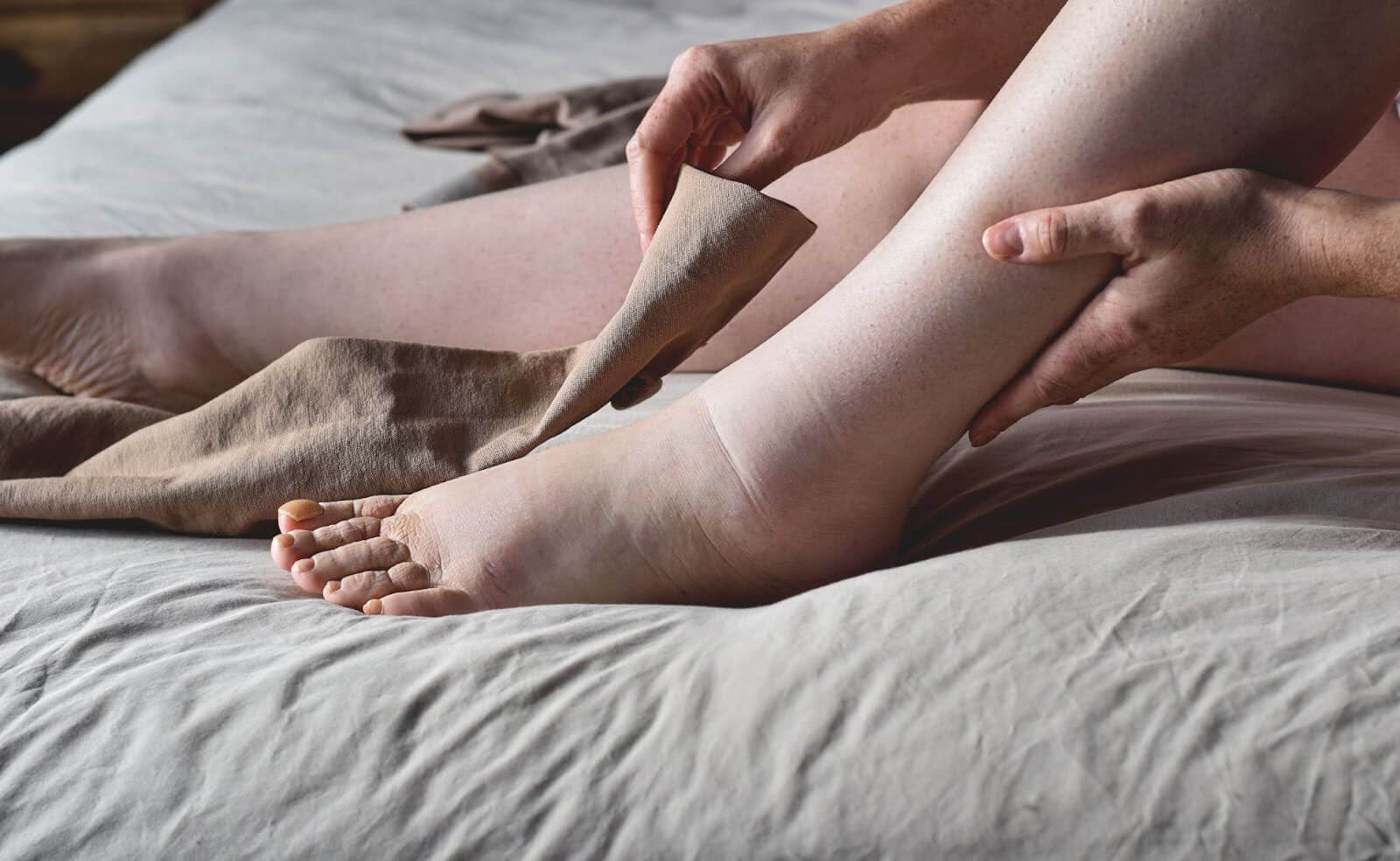Swelling is a common occurrence in the body and can affect nearly any part of the body, including the legs, ankles, and hands. Also called edema, this condition is when excess fluid is trapped in the body's tissues. While it can range from mild and temporary to chronic and serious, many forms of edema can be managed or even reversed with the right approach. We’ll help you better understand what edema is, its most common causes, and how to reverse edema naturally or with medical support.
What Is Edema?
Edema occurs when fluid builds up in the tissues, most often in the lower limbs but also in the arms, hands, face, or abdomen. This buildup can make the affected area look puffy or swollen and may be accompanied by tightness, discomfort, or skin that feels stretched. Common causes of edema include inactivity or prolonged sitting, injury, pregnancy, high sodium intake, certain medications, venous insufficiency, and lymphatic conditions. It can also result from heart, kidney, and liver conditions. Edema treatment is different depending on the cause, so understanding why it occurs is key to reversing the situation.
Can You Reverse Edema?
In many cases, you can reverse edema, especially if it’s caused by lifestyle factors, mild circulatory issues, or medications. However, for more serious underlying medical conditions such as heart failure or kidney disease, the goal of treatment is often to control rather than fully reverse the swelling. Addressing the root issue often leads to a significant reduction or full reversal of swelling.
How to Reverse Edema Naturally
For mild to moderate cases, particularly those not caused by serious chronic conditions, natural edema treatments can be effective.
- Elevate the Affected Area: Raising your legs above the level of your heart can help move fluid back toward your core and reduce swelling.
- Stay Active: Movement encourages circulation and lymphatic flow. Gentle walking or using a low-impact wellness tool like Juvent’s Micro-Impact Platform® can stimulate natural drainage and reduce pooling. The Micro-Impact Platform is a great start for those beginning with limited mobility or exercise capacity.
- Reduce Salt Intake: High sodium levels contribute to water retention. Avoid processed foods and aim for a balanced, low-sodium diet to support fluid balance.
- Hydrate Properly: Dehydration can actually make your body hold onto fluid. Drink plenty of water to encourage your body to release excess fluids.
- Use Compression Garments: Compression socks or sleeves help apply pressure to swollen areas and improve blood flow.
- Massage and Lymphatic Drainage: Manual techniques and gentle massage can stimulate lymph flow and reduce swelling, especially in cases of lymphedema.
These strategies often serve as the first line of treatment and may provide noticeable relief within a few days to a few weeks, depending on the cause and severity of the edema.
Medical Edema Treatment Options
In cases where lifestyle changes aren’t enough or where the cause is medical, a healthcare provider may recommend other measures. Diuretics are medications that help the body eliminate excess fluid and may be prescribed. Treatment of underlying conditions, like managing diabetes, heart failure, or kidney disease, is also a priority. If the swelling is a side effect of another drug, the provider may need to adjust the medication. Always speak with a healthcare provider if you’re experiencing unexplained or persistent swelling.
How Long Does It Take to Reverse Edema?
The timeline for reversal depends entirely on the cause. Lifestyle-related edema, such as from prolonged standing or salt intake, may improve in a few days. Medication-related edema may subside within a week or two after dosage changes. Chronic or medical-condition-induced edema may require ongoing treatment and management. Patience is key, and tracking changes in swelling and working with your provider helps ensure progress.
Don’t Let Edema Stop You
From lifestyle adjustments and natural remedies to medical treatments, there is a wide range of tools to address and manage this condition. If you're looking for options on how to treat edema, start with movement, hydration, and diet. Tools like the Juvent Micro-Impact Platform can be effective, non-invasive options to support circulation and fluid movement, especially when paired with other natural strategies for edema relief. And if you're dealing with persistent swelling, don’t wait—partner with your doctor to find a tailored solution. Stay on top of your edema and enjoy the mobility to move about life with comfort and freedom.


Share:
What Does It Mean if Your Joints Get Sore From Time to Time?
Why Your Bones Need Impact: The Missing Link in Your Wellness Routine